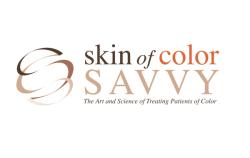
OR WAIT null SECS
Ruxolitinib Cream Shows Long-Term Safety in Children, Adults With AD, Vitiligo
Phase 3 trials have shown low rates of serious adverse events with ruxolitinib cream in pediatric and adult patients with atopic dermatitis and non-segmental vitiligo.
Data presented at the SDPA Annual Summer Dermatology Conference in Washington DC, from June 25 – June 29th, from 7 phase 3 clinical trials demonstrate a low risk of adverse events with ruxolitinib cream in children and adults with atopic dermatitis and nonsegmental vitiligo.1
Led by David Rosemarin, MD, the chair of the department of dermatology at Indiana University School of Medicine in Indianapolis, the team investigated the long-term safety of ruxolitinib (JAK1/JAK2 inhibitor) cream in pediatric and adult atopic dermatitis and nonsegmental vitiligo. Ruxolitinib is approved in the US and Canada to treat both conditions in patients aged ≥ 12 years. The investigators found that while JAK inhibitors carry class warnings for serious infections, thromboembolic events, MAC, and mortality, the trials showed these adverse events were uncommon, even in patients as young as 2 years.2
Investigators calculated exposure-adjusted incidence rates (EAIRs) using data from 4 phase 3 studies in mild to moderate atopic dermatitis and 3 in nonsegmental vitiligo.1 EAIRs were measured as the number of patients with an event per 100 PY of exposure.
In atopic dermatitis trials, patients self-evaluated lesion recurrence between visits. If lesions cleared, treatment stopped 3 days later; if new lesions appeared, patients contacted the team for guidance.
All 52-week atopic dermatitis trials enrolled patients with IGA scores of 2 or 3 and BSA of 3–20% (excluding scalp). TRuE-AD3 included patients aged 2–11 years with atopic dermatitis ≥ 3 months, TRuE-AD ½ included patients ≥12 years with atopic dermatitis ≥2 years, and NCT05456529 included participants aged 12 – 17 years who had atopic dermatitis for ≥ 2 years. In TRuE-AD3 and both the TRuE-AD ½ and NCT05456529, 159 and 601 patients used 0.75% cream, while 154 and 701 used 1.5% cream, respectively.
As for the 104-week nonsegmental vitiligo trials, participants aged ≥ 12 years had total BSA ≤ 10%, facial BSA ≥ 0.5 (F-VASI score, ≥ 0.5), and a non-facial BSA ≥ 3% (T-VASI score ≥ 3).
Children aged 2 – 11 years with atopic dermatitis or vitiligo using either strength had low EAIRs of serious infections, NMSC, other malignancies (excluding MACE), and thromboembolic events. No deaths occurred.
Rates of serious infections (patients/100 PY) were 0 (95% confidence interval [CI], 0 – 3.29) and 0.89 (95% CI, 0.02 – 4.94) in ages 2 – 11 years with AD receiving 0.75% and 1.5% cream, respectively. For those ≥ 12 years with AD, rates were 1.13 (95% CI, 0.37 – 2.67) and 0.92 (95% CI, 0.30 – 2.14) for 0.75% and 1.5% cream, respectively. Patients with nonsegmental vitiligo on 1.5% cream had a serious infection rate of 0.46 (95% CI, 0.13 – 1.18). Pneumonia occurred in 4 patients across all trials.
Investigators also saw low rates for NMSC: 0 among 2 – 11-year-olds with AD; 0.68 (95% CI, 0.14 – 1.98) and 0.37 (95% CI, 0.04 – 1.32) for ≥ 12 years on 0.75% and 1.5% cream, respectively. Vitiligo patients also had low NMSC rates (0.12; 95% 0 – 0.64). There were 3 instances of basal carcinoma of the skin and 4 squamous cell carcinomas of the skin among all patient populations.
MACE was rare, with no cases in patients 2 – 11 years with AD or those ≥ 12 years with vitiligo. Only 2 patients with AD aged ≥ 2 years faced a cerebrovascular accident.
No thromboembolic events were seen in participants with AD aged 2 – 11 years. Low rates occurred in other groups, with 2 cerebrovascular accidents and 2 pulmonary embolisms reported.
Adverse events were deemed unrelated to the treatment and often resolved without interrupting or stopping ruxolitinib. Plasma concentrations remained low— below 281 nM, the threshold linked to JAK-mediated myelosuppression.
“The low risk of experiencing these adverse events in conjunction with the low likelihood that they were caused by ruxolitinib cream is consistent with a topical route of administration that minimizes systemic JAK inhibition,” investigators concluded.
References
Rosmarin D, Kircik L, Harris J. Long-Term Safety of Ruxolitinib Cream in Pediatric and Adult Patients: An Analysis of 7 Phase 3 Clinical Trials in Atopic Dermatitis and Nonsegmental Vitiligo. Presented at 2025 SDPA in Washington DC from June 25 – June 29, 2025.
Issa NT, Kwong P, Bunick CG, Kircik L. INDIVIDUAL ARTICLE: Ruxolitinib 1.5% Cream and the "Boxed Warning Paradox": Reappraisal of Safety Through the Lens of Pharmacokinetics. J Drugs Dermatol. 2025;24(2):s16-s22. doi:10.36849/JDD.49143
Related Content:


